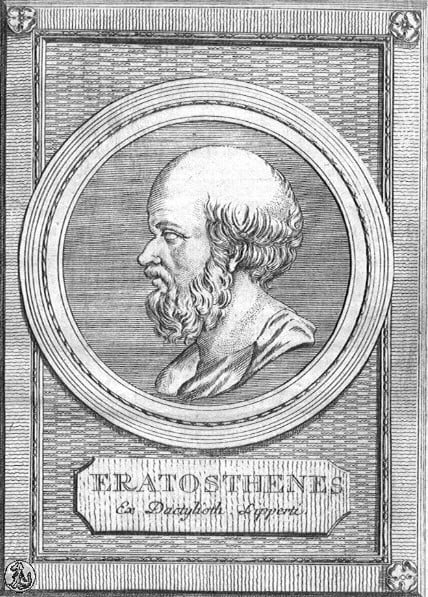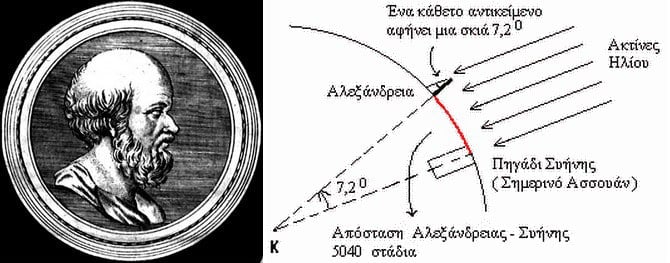
An experiment devised by one of Greece’s greatest thinkers and scientists, Eratosthenes, was recreated once again recently by students from 35 nations around the globe as part of an annual scientific project. And pupils from Greece took part in the experiment alongside those from Boyden, South Africa, which is on the same line of longitude.
Over 10,000 students around the globe recreated the seminal experiment from one of ancient Greece’s scientific giants, who calculated the exact circumference of the earth –using only a stick — and logic.
Tychero, a town on Greece’s northwestern border was the location where students recreated the great thought experiment from the time of Ancient Greece, working together with fellow students from a town which lies along the same exact line of longitude in South Africa.
Measuring shadows to determine the Earth’s circumference
Like the great scientific thinker of thousands of years ago, the schoolchildren observed that indeed, they could correctly calculate the radius of the Earth by measuring the shadow cast by a vertically-placed stick at noontime.

“It was an unforgettable experience. By applying the math we know, we realized its usefulness in the real world,” said Alexandra, a high school student from Tychero.
The 2022 version of the worldwide Eratosthenes Experiment, which took place on March 22, was organized in Greece by the Research and Development Department of Ellinogermaniki Agogi in collaboration with the Hellenic Mathematical Society.
Using a stick, Eratosthenes had calculated that the Earth’s circumference is approximately 40,030 km (24,873.489 miles) — a figure that mid-20th century scientists verified after launching satellites into space.
Eratosthenes, who was the head of the Library at Alexandria, had heard that in Syene, a city south of Alexandria, no vertical shadows were cast at noon on the summer solstice. The sun was directly overhead.

Eratosthenes first to prove circumference of Earth, using logic
That prompted the great man to wonder if that happened in Alexandria as well. And if not, why not?
So, on June 21 he planted a stick directly in the ground and waited to see if a shadow would be cast at noon. Indeed, there was one, and it measured about 7 degrees.
Eratosthenes must, of course, have believed that the Earth’s surface is curved before he performed that test. This is most likely why he wanted to confirm that if the sun’s rays are coming in at the same angle at the same time of day, and a stick in Alexandria casts a shadow while a stick in Syene does not, the Earth’s surface is curved.
The idea that Earth is a sphere was first introduced by another ancient Greek mathematician, Pythagoras, around 500 BC and validated by Aristotle about 200 years later. Therefore, Eratosthenes figured that he could estimate the circumference of the entire sphere.
Based on the shadow’s length of 7 degrees in Alexandria and 0 degrees in Syene, Eratosthenes calculated that the two cities are 7 degrees apart on Earth’s 360-degree sphere.
Then he hired a man to pace the distance between the two cities and learned they were 5,000 stadia apart, which is approximately 800 kilometers (497 miles).
Eratosthenes then proceeded to arrive at the Earth’s circumference — 7.2 degrees is 1/50 of 360 degrees, so 800 times 50 equals 40,000 kilometers. Using this method, he determined the almost exact circumference of the planet, using only a stick — and his brain.
See all the latest news from Greece and the world at Greekreporter.com. Contact our newsroom to report an update or send your story, photos and videos. Follow GR on Google News and subscribe here to our daily email!



